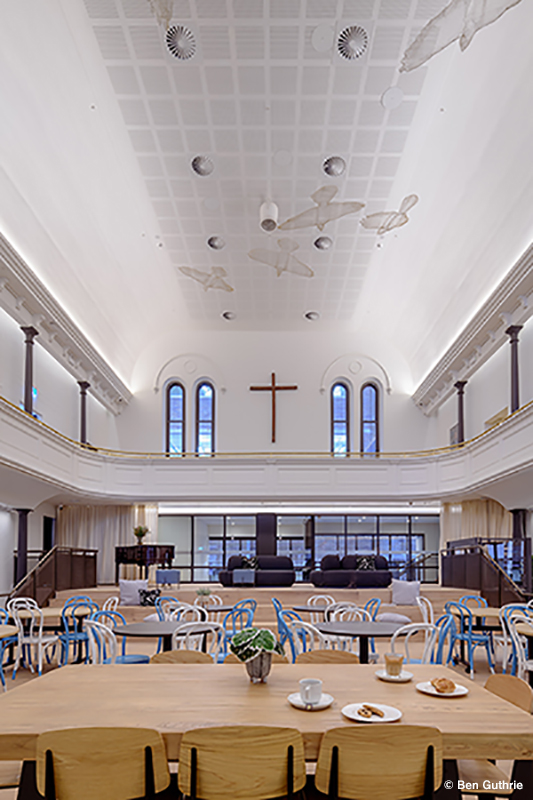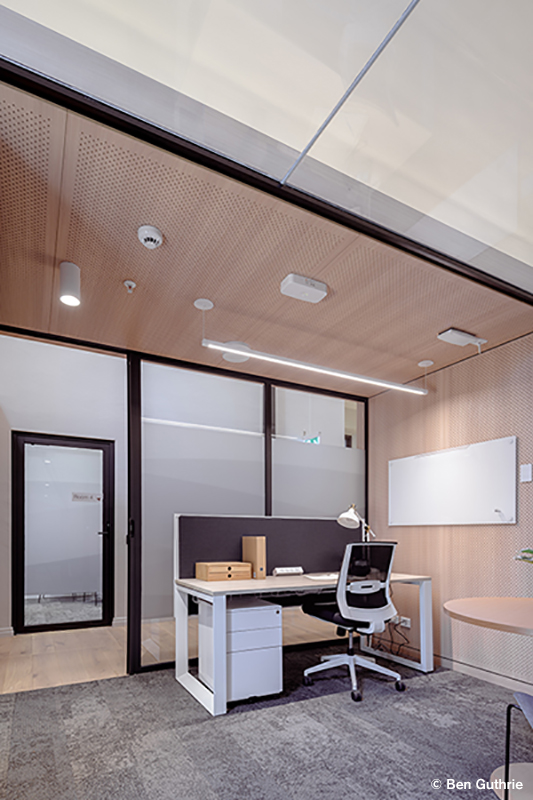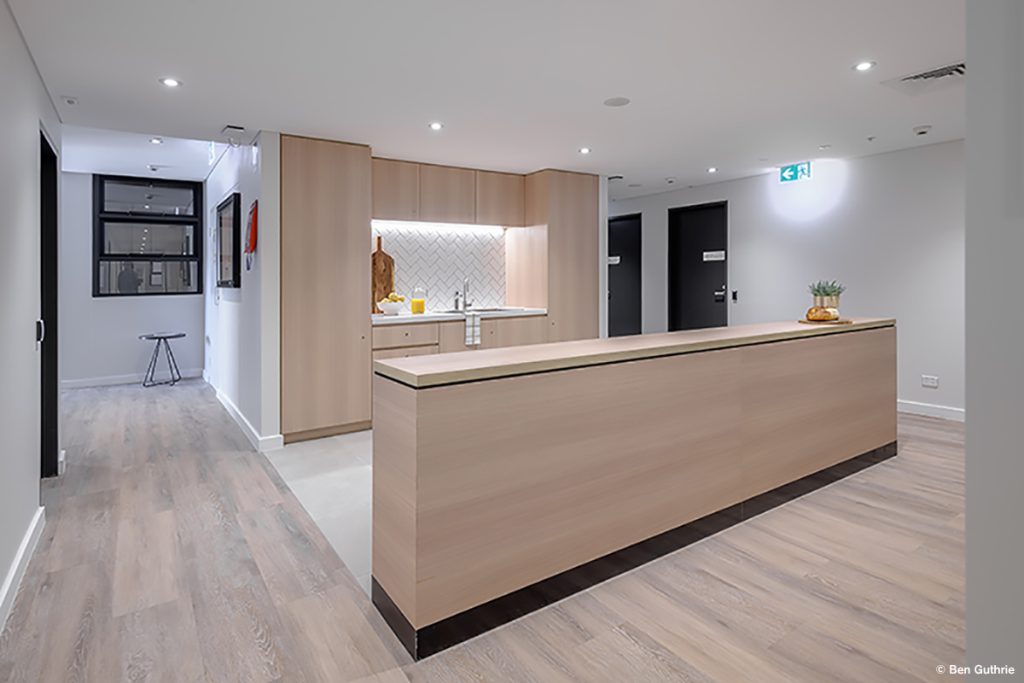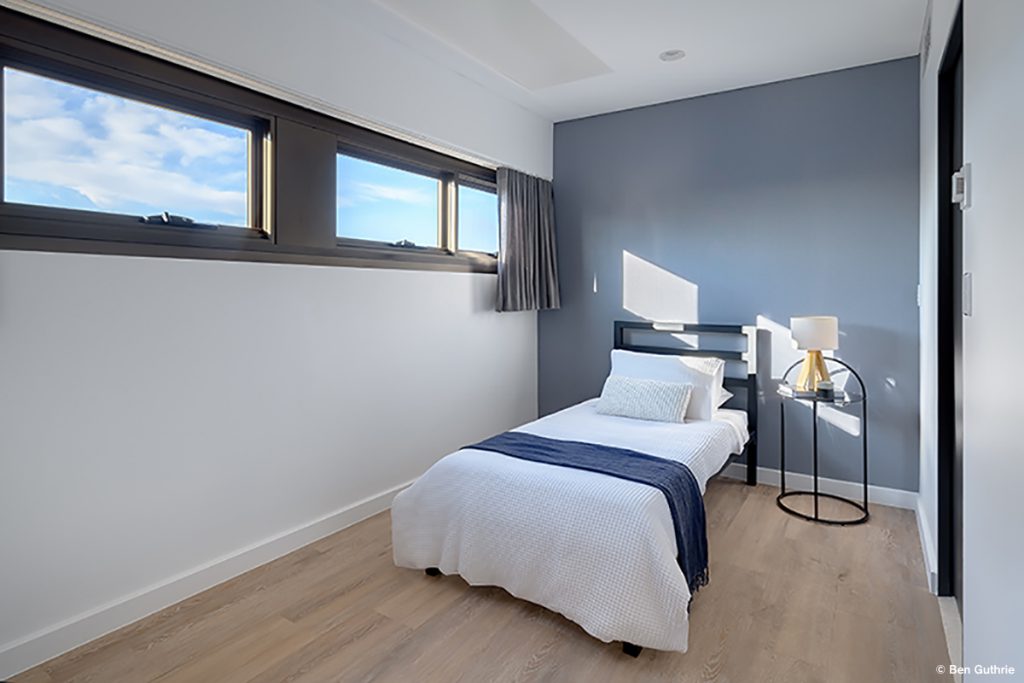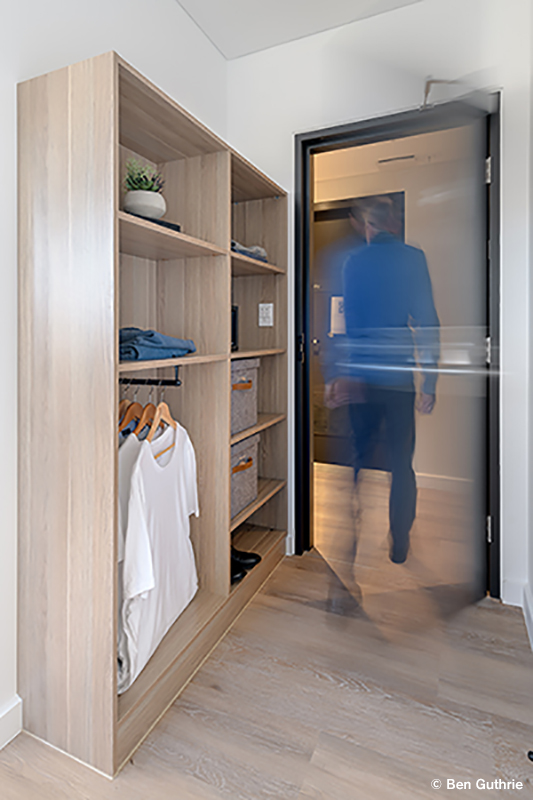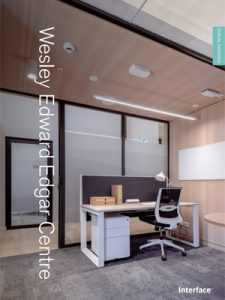Architect/ Designer: Scott Carver
Project: Wesley Edward Eagar Centre
Segment: Social Housing
Products: Carpet – Nimbus Graphite. LVT – textured Woodgrains Light Oak and Charcoal Dune
Project Size: 1,000 sqm
The recent refurbishment of the Wesley Edward Eagar Centre redefines the concept of crisis accommodation and social housing. The team at Scott Carver, deinstitutionalises the notion of a shelter by focussing on the comfort, well-being and rehabilitation of residents, while embracing the building’s legacy and community-driven character.
Creating inviting interiors that ooze warmth and prioritise dignity, was essential for the reinvented space to maintain a harmonious dialogue with the centre’s heritage elements.
“It is a place of respite, that brings a sense of ownership, improve dignity and to promote guest safety,”
explains Angela Biddle, Director of Interiors at Scott Carver.
Scott Carver’s undertaking has generated a community-driven residence that maintains a strong sense of belonging to its bustling neighbourhood, while offering a safe haven for those in need. “We designed the space with the sense of belonging at the forefront and as a vehicle to help the residents rehabilitate but also gradually learn the relevant skills to be able to get back into society,” says Angela.
Interface’s Luxury Vinyl Tile (LVT) has been incorporated across all the corridors, 40 individual bedrooms and the kitchenette. The gentle and neutral shades of Light Oak and Charcoal Dune from the Textured Woodgrains, Level Set Collection help achieve calm interiors that enhance the domestic character of the facility. The warm tones give the spaces a minimal, yet textural look and a feel that ties in with the heritage elements of the chapel.
Similarly, the unimposing pattern of the Nimbus carpet tile in a subdued Graphite shade brings a sense of softness and safety to some of the key areas that encourage interactions, including the mezzanine break-out space, the office spaces and to the multipurpose room.
Convenient to clean, the modular flooring products combine the reliability of a durable material with ease of maintenance, allowing the clients to replace individual tiles as and when needed. “If a part of the floor gets scratched or damaged, we don’t have to re-do the entire floor,” Rupal explains. This effective and efficient way to minimise waste is further advanced by Interface’s innovative ReEntry program. The process enables their products to be recycled after use, aligning with Scott Carver sustainability aspirations.
Adam Bereczky, NSW/ACT State Sales Manager at Interface, adds, “We’re based in Surry Hills and embedded in the neighbourhood, witnessing first-hand the struggles some people in the community face. I’m blown away by the outcome that Scott Carver has achieved, they’ve truly created a space that will have a positive impact on the community and building’s occupants for many years to come. We’re thrilled our flooring meets the demands of the space and contributes to the overall feeling of a safe and calming environment.”
This extraordinary project has established a new benchmark for what’s possible in the all-important realm of social housing. Setting precedent for crisis accommodation, this mindfully redesigned shelter demonstrates that design can create safe, supportive, and encouraging spaces for societal reintegration.
Photo © Ben Guthrie
Download PDF
